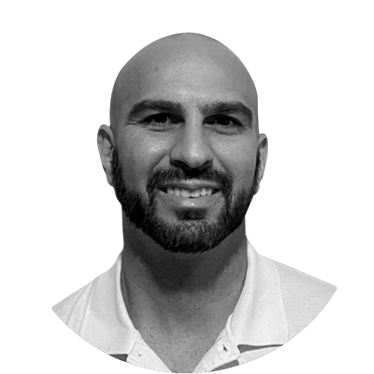Programs Near You
Select a program of interest down below and we'll connect you with schools that match
How to Become an Aircraft Mechanic (A&P Technician)
Updated October 20, 2025 | Brad Fishbein
Ever looked up at a jet slicing through the clouds and thought, someone's making sure that thing stays in the air?
Well… that someone could be you.
Aircraft mechanics or A&P Technicians (short for Airframe & Powerplant) are the heartbeat of aviation. They're the ones who keep every flight safe, every landing smooth, and every pilot confident enough to take off again.
And the best part? You don't need a college degree. Just solid training, curiosity, and a little grease on your hands.
What Aircraft Mechanics Actually Do
Let's be honest this isn't your typical desk job. You'll be around the hum of engines, the smell of jet fuel, and the satisfaction of knowing your work literally keeps people alive.
Day-to-Day, You Might Be:
- Inspecting and maintaining aircraft engines, wings, landing gear everything that makes a plane fly.
- Diagnosing problems with mechanical or electrical systems.
- Using advanced tools and digital diagnostic equipment.
- Replacing parts, signing off FAA maintenance logs, and checking everything twice.
It's hands-on, detail-heavy work. And every bolt you tighten tells someone, “You're safe to fly.”
Salary & Job Outlook
| Quick Facts | Aircraft Mechanics |
|---|---|
| 2024 Median Pay | $79,140 per year / $38.05 per hour |
| Typical Entry-Level Education | Postsecondary nondegree award |
| Work Experience Required | None |
| Training Time | 18–24 months or 30 months of experience |
| Job Outlook (2023–33) | 5% (As fast as average) |
| Employment Change (2023–33) | +7,300 jobs |
Source: U.S. Bureau of Labor Statistics – Aircraft and Avionics Equipment Mechanics and Technicians
Aviation never sleeps. And neither does the demand for skilled mechanics. From small charter planes to global airlines, A&P-certified techs are always needed.
How to Become an Aircraft Mechanic (5 Steps)
Becoming an aircraft mechanic isn't about memorizing theory it's about learning how to think, problem-solve, and stay calm when metal and machinery are in your hands.
-
Finish high school or earn a GED
Classes like math, physics, and shop help more than you'd think. -
Complete FAA-approved training
You can attend an FAA Part 147 aviation maintenance school or gain equivalent experience in the military. -
Build experience (1,900 hours total)
The FAA requires about 30 months of supervised work or 1,900 hours of instruction. -
Pass your FAA exams
There are three parts:- General – physics, tools, and materials
- Airframe – structure and systems
- Powerplant – engines and fuel systems
-
Earn your A&P license and start your career
After that? You can work at airports, airlines, repair stations or even go solo and start your own business.

Certification & Licensing
Here's what the FAA expects before they hand you that A&P certification:
- You're at least 18 years old
- You can read, write, and speak English
- You've finished a Part 147 training program or logged your work experience
- You've passed all three FAA tests (written, oral, and practical)
After three years as a certified A&P, you can apply for Inspection Authorization (IA) basically your ticket to higher pay and more responsibility.
Skills That Make You Great at This
- You notice the details others miss
- You stay calm when things get complex
- You love solving mechanical puzzles
- You're safety-minded and precise
- You don't mind getting your hands dirty
The best mechanics are part technician, part detective, and part artist.
Where You'll Work (and Grow)
Aircraft mechanics work in:
- Commercial airlines
- Private jet companies
- Military and defense contractors
- Aerospace manufacturers (Boeing, Lockheed, etc.)
- Repair and maintenance facilities
Career Growth Paths
- Lead Mechanic or Crew Chief
- Avionics Specialist
- Maintenance Inspector (IA)
- Aviation Maintenance Instructor
Pros & Cons
Pros:
- Strong pay and global job demand
- Work with cutting-edge aircraft systems
- Every day feels different
- Respect and responsibility
Cons:
- Requires high precision and focus
- Sometimes physically demanding
- Shift work and overtime possible
Related Trades
Start Your Aircraft Mechanic Journey
If you've ever wanted a career that feels real one where your work directly impacts safety, performance, and people's lives aviation maintenance might just be it.
You don't have to wait for a degree or a fancy resume. You just have to start.
It's time to take off.
Explore Related Topics:
Notice an update we should make?
We strive for accuracy. Contact us here if you see incorrect or outdated info on this page.

Meet the author: Brad Fishbein is a Florida Licensed Mold Assessor and council-certified Microbial Investigator. He’s the founder of TradeCareerPath.com and has completed over 5,000 mold inspections since 2009. Brad now helps homeowners and tradespeople make smart decisions about mold, licensing, and skilled career paths.
.svg)